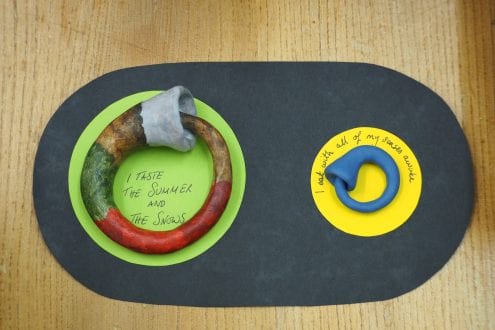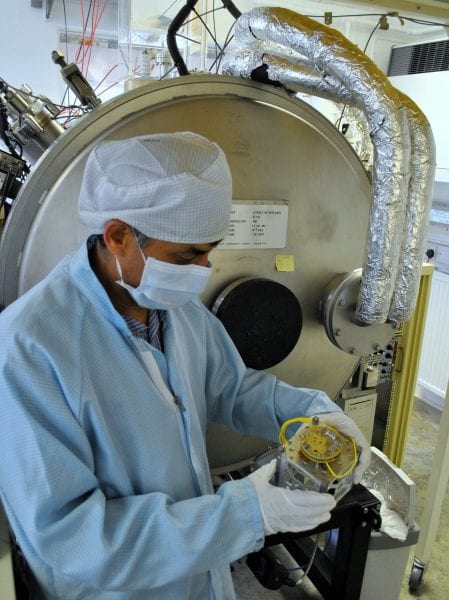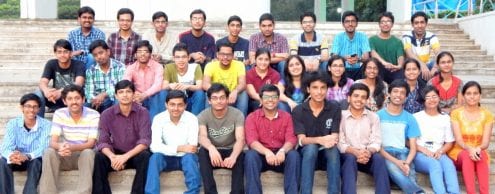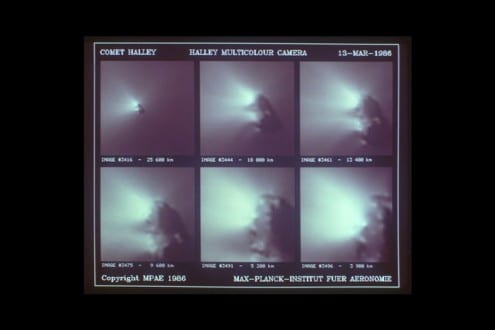Student Vlog: Day of the Dead – what is it and where does it come from?
By Peter Marron, on 25 October 2022
In the run up to Halloween, UCL Science & Technology Studies student Andrea explains the Day of the Dead, its significance in Mexican culture and how technology helps to connect with traditions.
Student Vlog: Tricks to treat your fear of Maths
By Peter Marron, on 15 October 2022
Do you have math phobia? Well, you’re not alone! To celebrate the spooky season, UCL Mathematics student Teren asks UCL students to share their tricks to treat the fear of maths. Happy Halloween!
Meet Our Digital Ambassadors
By Peter Marron, on 30 September 2022
If you’re following UCL Mathematical & Physical Sciences on social media, or on this blog, be prepared to meet our Digital Student Ambassadors! Our Ambassadors are current MAPS students who are happy to share their experiences studying at UCL and give you a real taste of student life here at UCL, by creating heaps of exciting content including videos, blogs, podcasts and social media takeovers!
David Lammy attends UCL Maths Black Mathematician Month Event
By Sophie J Lane, on 4 December 2018
To celebrate the second Black Mathematician Month, Chalkdust magazine and UCL maths department organised a maths workshop day in Tottenham for 60 Year 9/10 students from 6 local schools. The aim of the day was to highlight the minimal progress of diversity in our field and to improve it in the best way possible. After the success of last year, we were very excited to showcase our passion in Tottenham. We hope that it will encourage young black students to engage more with maths, enjoy it and view it as an important skill for employment.

To kick start the day, the MP for Tottenham, David Lammy gave a speech about the importance of believing that you can achieve anything, regardless of what your upbringing may have been like. Lammy spoke of WhatsApp founder Jan Koum, who had to migrate to USA as a child with his parents, who both passed away soon after. Lammy also spoke about the recent Brexit proposal and how his team of researchers were needed to check it and discuss how it would impact the public’s finances. Each of these anecdotes served the purpose of highlighting the significance of maths in life’s difficult situations. Ultimately, the technological and economic climate is changing quickly, and Lammy hopes that maths students – such as the ones who were sat before him – will be well-placed to lead the way.

Keen to remind us that maths isn’t all just formulas, Dr Nira Chamberlain then arrived with an enthusiastic, interactive and humorous presentation about how maths can be applied to the real world. All the students thoroughly enjoyed these talks and could not wait for the workshops.
These workshops included fun and intriguing maths ranging from Number Theory, Modelling to Frieze patterns and Topology. They were run by UCL PhD students and Dr Naz Miheisi from Kings college. In the topology class, we made several types of Möbius loops, combined them and understood their properties. A discussion was also held about the Klein bottle and Projective plane. The students were all trying to predict what the different shapes would turn out as, but were completely astonished by the results. Some did say they would make great Christmas decorations!

In the afternoon, UCL undergrad volunteers formed a Q&A panel to answer numerous, interesting and funny questions from the pupils, some including about turning up to lectures! On a serious note, the students did find this very helpful and informative, further establishing whether maths is for them.
To round off the day, there was a question relay between schools where the winning team got their very own Chalkdust T-shirt. The pupils did get competitive against each other, albeit for the love of maths!
For me personally, I loved this whole day and the idea of inspiring the next generation felt very rewarding and I will be hoping to do more outreach events like this in the future.
To conclude, thank you to London Academy of Excellence for hosting the event. The feedback from the schools shows that they thoroughly enjoyed the day and that it will really influence their pupils’ future decisions. After all, that’s what this Month is all about!
Written by Amin Sabir
UCL STFC summer school in Machine Learning and Artificial Intelligence
By Charlotte E Choudhry, on 26 September 2018

This July, University College London (UCL) hosted the first ever Science and Technology Facilities Council (STFC) summer school in Artificial Intelligence (AI) and Machine Learning.
120 PhD students from universities across the country were brought together to spend a week and a half learning about the forefront of AI technology. With lectures from several industry leaders; including Intel, NVidea, ASI, and Dell, the summer school aimed to give a solid grounding in the basics of machine learning before providing a glimpse into some of the latest technologies now being applied.
This included being granted access to some of the best interactive platforms currently available; and allowed students to follow along with demonstrations during the lectures. To start with, ASI’s ‘SherlockML’ enabled students to familiarise themselves with the most common tools used in machine learning. By making use of the Intel ‘DevCloud’, students were then shown how to optimize Neural Networks in TensorFlow and Caffee, before learning about computer vision and making use of the Movidius stick to be able to turn a webcam into a tool to classify everyday objects. NVidea also demonstrated how to make the most out of currently available computing clusters, using Graphics Processing Units (GPUs) to parallel process tasks, and students were taught how to build a convolutional neural network in ‘Digits’ which could then classify whale faces.
On top of the extensive technical training there were additional guest lectures highlighting how machine learning can be applied to a variety of different fields, from high energy physics and astrophysics to in industry. It was also made evident how machine learning techniques will be vital in the future of astronomy with new methods such as gravitational waves and new observatories like the Square Kilometer Array (SKA) which will produce petabytes of data every day.
Over the weekend a further 100 sixth form pupils were invited to take part in a hackathon-style event lead by the visiting PhD students, where during the afternoon the students demonstrated how machine learning could be applied in a real research scenario at the Large Hadron Collider (LHC).
One of the best things about assembling people from such a wide range of disciplines, with a common interest in machine learning and AI, was the incredible diversity of the work presented. Over the course of three poster sessions, we had the opportunity to discover what was being researched; from classifying solar winds and galaxies to using neural networks for novel detection methods in the LHC. And for one evening, this was combined with a chance to meet and talk with professionals from various CDT industry partners with companies like ASOS, TFL, and NCC Group.
As well as networking with the industry partners, a key aim of any summer school is to develop links between the students themselves. Although never an issue when helped along with some free food and drinks, it was especially encouraging to see everyone come together for the quiz night, with each team setting a round of obscure questions, and the school ended in spectacular fashion making use of the record-breaking summer with a river cruise BBQ on the Thames.
The Summer School was directed by Jonathan Tennyson, and the LOC/SOC included Tim Scanlon & Jason McEwen (CDT Research Directors), Jaini Shah (CDT Manager), and Nikos Konstantinidis & Ofer Lahav (CDT co-Directors).
-Written by Ben Henghes (Research Student, UCL Physics & Astronomy)
The Euclid Satellite and Gravitational Lensing
By Peter L Taylor, on 30 January 2018
In 1999 the physics community was stunned when it was discovered that far from slowing down under the pull of its own gravity, the universe is actually expanding at an accelerating rate. This is the cosmic acceleration problem and it poses one of the largest challenges in physics today. Here, at UCL’s Mullard Space Science Laboratory (MSSL) we are leading the effort to find a solution.

Parts for the Euclid Satellite, which will conduct a massive astronomical survey, are being built on site. Meanwhile we prepare for the arrival of the groundbreaking Euclid data by developing and testing techniques to distinguish between theories of cosmic acceleration.
We take advantage of an effect of Einstein’s theory of general relativity called gravitational lensing. As light from distant sources travels towards Earth, it is deflected by the gravitational attraction of intervening mass slightly distorting the shape of the observed image. This effect is normally very small, but by measuring the shape of billions of galaxies, amazingly we can statistically differentiate between theories. This type of analysis has been conducted before, but to get the most out of next generation experiments we must hone our methods. When comparing the two leading statistical techniques, we found both have serious drawbacks. Nevertheless we have shown that the two methods are just special cases of a more general theory: narrowing our search for a better approach.
Irrespective of the statistical technique that is ultimately used, we must always accurately predict the lensing signal to compare to the real universe. An intermediate step involves determining the power spectrum that describes the ‘clumpiness’ of matter on different length scales, at different times. We are working on a publicly available code that will help researches who generate these spectra determine whether their output is accurate enough to meet the needs of upcoming lensing experiments like Euclid.
Gravitational lensing is very a delicate business. Large collaborations must identify, understand and mitigate annoying instrumental and astrophysical effects that contaminate the lensing signal. UCL is leading the charge in preparation for Euclid’s launch in the early 2020s.
Image credit to ESA
UCL’s MAPS Faculty Artist in Residence, Kat Austen, exhibits as part of London Creative Network Showcase at SPACE
By Charlotte E Choudhry, on 6 February 2017

Over the last six months, UCL’s MAPS Faculty Artist in Residence, Kat Austen, has been developing her newest project, Vital | Flows, an interdisciplinary exploration of our relationship to food.
As part of the London Creative Network, Kat has been drawing together research methods from multiple disciplines to develop an artistic method that she will both publish open source and take out to communities through workshops.

Late last month, Kat exhibited at SPACE some of her the artwork she generated through personally going through the development of these methods, alongside interactive invitations for visitors to overlay their own interpretations. Part of the LCN Showcase at the gallery, Kat’s work featured “tart cards”, using found #foodporn images. These postcard-sized flyers show doughnuts, cakes and tarts in the style of London’s recognisable call-girl cards, which adorned phone boxes in their dozens up until the 2000s.

Kat will stage an intervention over the next two weeks where she will distribute her “tart cards”, which are complete with a valid phone number and topical voicemail message, around central London phone boxes.

Her “sensual eating talismans”, reminiscent of the ouroboros, teamed up with excerpts from D.H. Lawrence’s Mystic, evoke a multi-sensory aesthetic experience of eating and “the transmutation of matter that we conceive of as food”, says the artist.

As part of Vital | Flows, Kat also developed and exhibited DIY Chemistry analysis methods for investigating the presence of micronutrients in foods.
The methods developed for the artwork are the basis of Kat’s Citizen Science for Radical Change: co-design, art and community course for UCL’s Arts and Sciences BASc. As part of the module, students are leading workshops for pupils at Newham Sixth Form College to disseminate these methods as a way to discover new perspectives on food.
The LCN is an EC funded initiative, run by SPACE Studios in Hackney. Kat’s research has been supported by UCL’s Grand Challenges, doing it together science, Prof Andrea Sella and UCL Arts and Sciences BASc.
From summer interns to cubesats in space
By Charlotte E Choudhry, on 7 October 2016

Many students send emails requesting summer internships at UCL Physics & Astronomy, but one particularly caught Dr Anasuya Aruliah’s eye. Vishal Ray was a 2nd year Aerospace Engineering undergraduate at the prestigious Indian Institute of Technology Bombay, India (IIT). He belonged to a student team building their own miniature satellite. Vishal was just the student that Dr Aruliah needed for her new direction of research: satellite drag. After a successful application to the International Students Dean’s Summer Student Scholarships, he was awarded a 2 month internship in summer 2015.
Dr Aruliah’s group, the Atmospheric Physics Laboratory (APL), is a subgroup of the Astrophysics Group. It has a long history of researching the upper atmosphere using a global circulation atmospheric model. They also operate a network of Fabry-Perot Interferometers (FPIs) in Arctic Scandinavia to observe the aurora. The Earth’s atmosphere is like an onion skin, with the troposphere (the domain of weather forecasters), stratosphere and mesosphere as layers on top of each other. The thermosphere is the final layer of the Earth’s atmosphere, and is the altitude region between 90-400km. Low Earth Orbit (LEO) satellites occupy the top of the thermosphere, and rely on upper atmospheric models to predict their orbits.
Recently the APL group found a discrepancy between measurements of thermospheric winds calculated from Doppler shifts of airglow photons, and winds determined from atmospheric drag on the Challenging Minisatellite Payload (CHAMP) satellite. This is an important puzzle to solve because satellite drag measurements are put into atmospheric models to bring them as close to reality as possible. If the ground and satellite measurements do not agree, then which is correct?
The IIT miniature satellite, commonly called a cubesat, is composed of a single cube, only 30 cm in length, width and breadth, and weighing only 10 kg, as much as a few bags of sugar. Their cubesat is called Pratham. This fits perfectly with UCL’s involvement in the European Union FP7-funded QB50 project, in which fifty cubesats carrying miniaturised sensors will be launched nearly simultaneously. This is an international collaboration involving many universities, academic institutes and the space industry. It is an unprecedented science operation, with potential for future Space Weather monitoring campaigns. The QB50 cubesats will be carried by rocket into the upper thermosphere, and fall to Earth in decaying orbits while sampling regions of the thermosphere and ionosphere that were previously poorly understood owing to the lack of detailed measurements.
“The simplicity and low cost of cubesats has spurred much excitement and creativity amongst young (and old) engineers and scientists over the last few years. There are new frontiers being opened by this miniaturised space technology,” said Dr Aruliah.
The UCL Mullard Space Science Laboratory (MSSL) designed and built one of the three key sensors: the Ion Neutral Mass Spectrometer, which will be carried on several of the cubesats, as well as their own cubesat called UCLSat. The QB50 cubesats are scheduled for launch in three batches over the winter period of 2016-2017. Two batches from a Ukrainian-Russian Dnepr rocket, and a third from the International Space Station. During Vishal’s internship at UCL he met with the MSSL cubesat and sensor team, led by Mr Dhiren Kataria and Dr Rob Wicks; and with Dr Stuart Grey in the UCL Department of Civil, Environmental & Geomatic Engineering.

Dhiren Kataria holding the UCLSat designed and built at MSSL
Vishal used his experience to write several sophisticated computer programs to calculate drag coefficients from simulations of a cubesat orbiting in our 3-dimensional atmospheric model called CMAT2. This work was subsequently built upon by Dr Aruliah’s 4th year project student, Jennifer Hall. Jennifer wrote her own programs to derive and compare satellite drag coefficients from CMAT2 simulations and EISCAT radar measurements. Jennifer’s project won the UCL Physics & Astronomy Tessela prize for best use of computer technology in a 4th year project.

Pratham team at the Indian Institute of Technology Bombay. Vishal Ray is 2nd from the right in the top row.
One year on, after a busy 3rd year of studies, Vishal has written up his summer project as a journal paper, and “Pratham” was scheduled for launch at 0530 UTC on the 26 September 2016. The IIT Bombay student team installed their cubesat on the launch vehicle PSLV C-35 on the remote island of Sriharikota in South India. Vishal said that he “…had goosebumps when we actually placed the satellite on the launch vehicle module and completed the testing for one last time!”. “Pratham” was successfully launched and will measure the total electron count from 800 km altitude in a Sun Sychronous Orbit. MSSL were the first to receive Pratham’s beacon signal, which the students were incredibly excited to hear. You can hear the cubesat from 4:20 onwards as it passes within range of the detector at MSSL. The signal is decipered as “Pratham IIT Bombay Student Satellite”. The accompanying image is of Theo Brochant De Viliers (MSSL) beside the MSSL receiver.
https://soundcloud.com/uclsound/signals-from-the-pratham-cubesat-satelllite
The prospect of finally being launched is very exciting, with both projects having been nearly 10 years in the making. Once launched, the missions will change from the technical challenges of the innovation of miniature sensor devices to the scientific challenges of collecting, analysing and interpreting the measurements. The rewards will be great: from the new technologies surrounding cubesats; to the training of future space scientists and engineers, and to the Space Weather community.
Hidden in the archives: Finding the first-ever evidence of exoplanetary system
By Oli Usher, on 13 April 2016
You never know what hidden treasures can be uncovered in the archives.
And this was certainly the case at Carnegie Observatories’ collection when research for an article led to the unexpected discovery of a 1917 glass plate showing the first-ever evidence of a planetary system beyond our own Sun.
It all started last year when UCL astrophysicist Dr Jay Farihi contacted Carnegie Observatories’ Director, John Mulchaey, whilst researching an article on planetary systems surrounding white dwarf stars. Farihi was searching for a glass plate that contained a stellar spectrum of van Maanen’s star – a white dwarf discovered by Dutch-American astronomer Adriaan van Maanen.

The 1917 photographic plate spectrum of van Maanen’s star from the Carnegie Observatories’ archive.
Giotto at Halley: 30 years ago!
By Oli Usher, on 14 March 2016
![]() Written by Professor Andrew Coates, UCL Mullard Space Science Laboratory
Written by Professor Andrew Coates, UCL Mullard Space Science Laboratory
It was the year of the tragic Challenger disaster – but UCL-MSSL was making good news in space and making history too. The Giotto spacecraft carried 10 instruments, including one led by UCL-MSSL just 596 km (MSSL-ESOC!) from comet Halley on the night of 13th/14th March, with some spectacular results.
Giotto was ESA’s first solo interplanetary space mission, launched in 1985 on the penultimate Ariane 1 rocket. In many ways ESA itself can be thought of as ‘coming of age’ with this first bold step on its own out of Earth orbit. To date, Giotto collected the most complete set of data we have from a comet – the famous comet Halley.

Giotto approaching Comet Halley
 Close
Close


